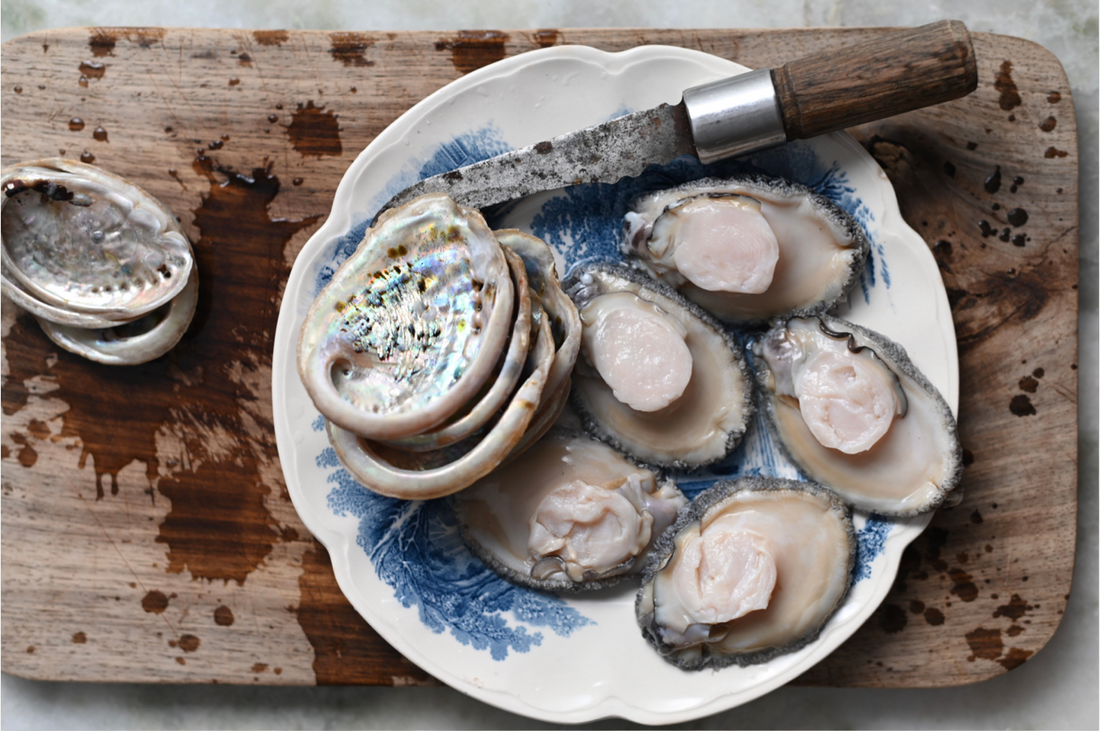
Abalone - The Return to the SA dinning room table
Share
Abalone
Many look at 2020 with despair. While I agree with this sentiment, we must not forget all the wonderful things that were born during this challenging year as it pushed many outside their comfort zones and the amazing results that came from this. Besides the birth of the Greenfish Online Seafood Deli that delivers to your door the same day, on of the things that stands out to me was the re introduction of Abalone to the Cape Town consumer.
Greenfish prides itself as been the first to legally supply live farmed abalone to our customers after a very long absence from the SA dinning room table.
Abalone, also known as perlemoen is known for its buttery, salty taste, and slightly chewy texture (in a good way, think calamari steaks) abalone is a highly sought-after seafood. This desirability has led to populations being severely depleted, and as recently as 2010 Abalone was listed as an endangered species with demand from the far east and invader species depleting the populations on the South African coastline. While still targeted by poaching syndicates and highly regulated by the government and watchdogs, the growth of aquaculture has meant that more and more South Africans have been able to try this delicacy. Abalone slow growth contributes to the pressure on the population. All our abalone is sustainably sourced from farms in Hermanus.
Late last year I visited the abalone farm to get in on the action. What I loved about the farm we are working with is the fact that they even grow their own “sea weed” to feed the perlemoen. This also forms part of the filtration system. Because of the land based farm located next to the ocean, sea water is pumped out the ocean , through the farm, through the natural filtration system, including the “sea weed” and the water returns back to the ocean in a cleaner state than what it was taken. I simply love the innovation.
Fun facts about abalone/perlemoen
- It takes 4-5 years to reach +-100g, the size of the inner palm of our hand
- There are 5 species of abalone in SA (we sell the Perlemoen – Haliotis midae)
- Abalone are part of the mollusc family, which includes clams, mussels, sea slugs and octopus
- If an abalone is upside down it can flip itself over using its foot.
- Abalone eat kelp and algae
- Although abalone has predators such as rays, sea otters and some reef fish. Its greatest predator are human.
I view abalone as the “Traditional South African Scallop”, the texture and taste as unique as our culture. This can be seen by all the wonderful creations that have graced the home dinner plate by our Greenfish Home Chefs. View some of the creations under the customer photos at the bottom of the page here https://greenfish.co.za/collections/fish-boxes/products/live-box-abalone-perleomoen
